When is the best time to visit Madagascar?
30/03/2025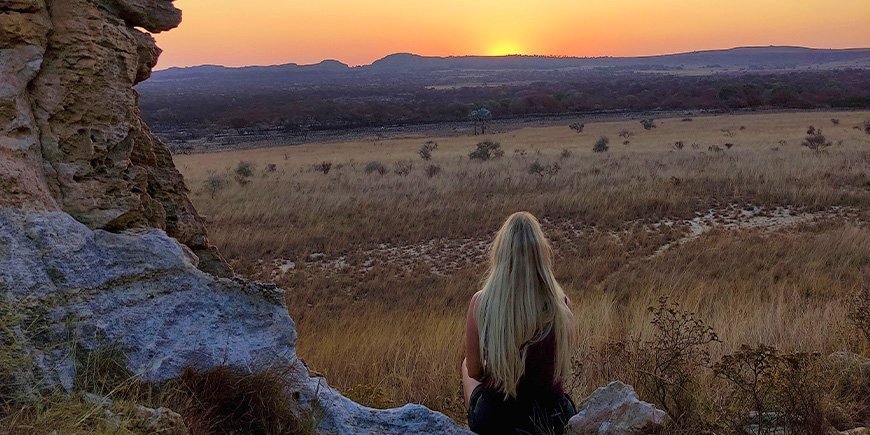
With its unique nature, exotic wildlife, and breathtaking landscapes, Madagascar attracts adventurous travellers year-round.
But when is the best time to visit Madagascar?
Below, you’ll find a guiding overview of the weather in Madagascar and the best time to visit.
Weather and climate in Madagascar
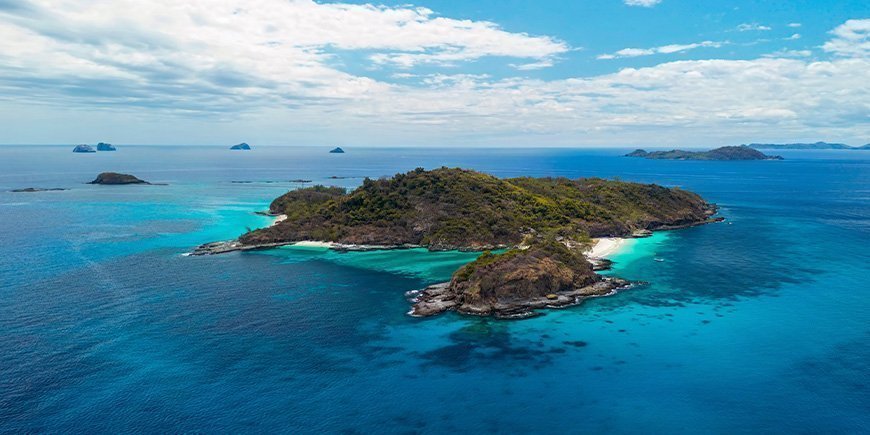
Madagascar is situated 400 km off the southeast coast of Africa in the Indian Ocean.
The country has a tropical climate, broadly divided into two seasons.
- Dry season (winter): May to October – cooler and more comfortable temperatures
- Rainy season (summer): November to April – warmer, more humid, with a chance of rain
As Madagascar is positioned in the southern hemisphere, the island’s coldest months are opposite to those in Europe. They have summer while we have winter. However, temperatures vary depending on the altitude, with coastal areas generally warm all year, whereas the highlands, especially around Antananarivo, can be significantly cooler at night, particularly during the winter months.
Cyclone season
The cyclone season in Madagascar lasts from January to March. During this time, there is a risk of tropical storms, which can bring strong winds and substantial rain, especially in the eastern and northern parts of the island, which should be avoided in these months.
If you travel during the cyclone season, you should head to central and southern Madagascar, where the weather is typically more stable. Here, you can discover places like Anakao, Ifaty, Toliara, Andasibe-Mantadia National Park, and Isalo National Park, which are fantastic destinations year-round.
Winter and dry season in Madagascar
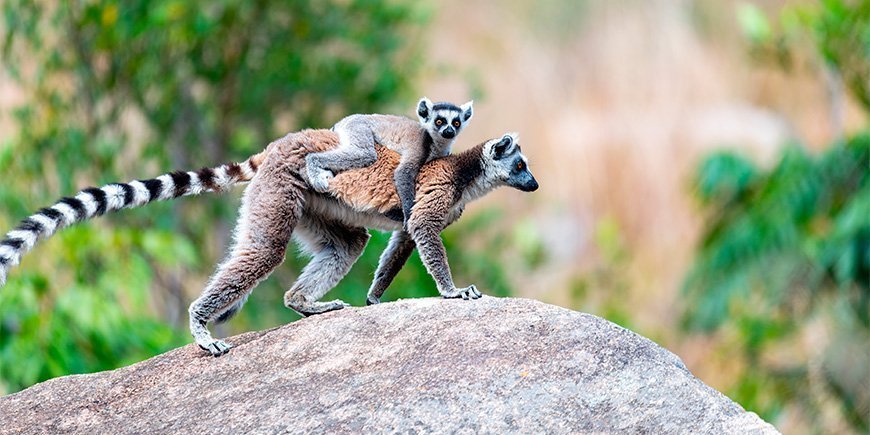
The cold, dry season – Madagascar’s winter – runs from May to October and is generally the most popular time to visit Madagascar.
Temperatures, however, aren’t like those we know from European winter. The days are pleasantly warm, while it can get chilly in the mornings and evenings.
In the winter months, the humidity and temperatures are lower and more pleasant than in the hot, wet season, and there is less rainfall.
The dry weather makes it easier to explore the national parks as the paths are less likely to be muddy. Many lemurs give birth during the dry season, and September and October are particularly good times if you wish to see these playful little creatures. Furthermore, the whale season runs from June to September when humpback whales can be spotted from the coast in several parts of the waters around Madagascar.
The dry season is also perfect for snorkelling, for instance, at the reef around Nosy Be, as the sea is calmer and the visibility is good.
Benefits of travelling in the winter months
- The dry weather provides excellent conditions to explore national parks where the trails are not muddy.
- Most lemurs can be seen throughout the year, but the late winter months are ideal for spotting young lemurs.
- It’s whale season from June to September, and in several places, you can see humpback whales from the shore.
- High sea visibility offers excellent conditions for snorkelling, such as around Nosy Be.
Summer and rainy season in Madagascar
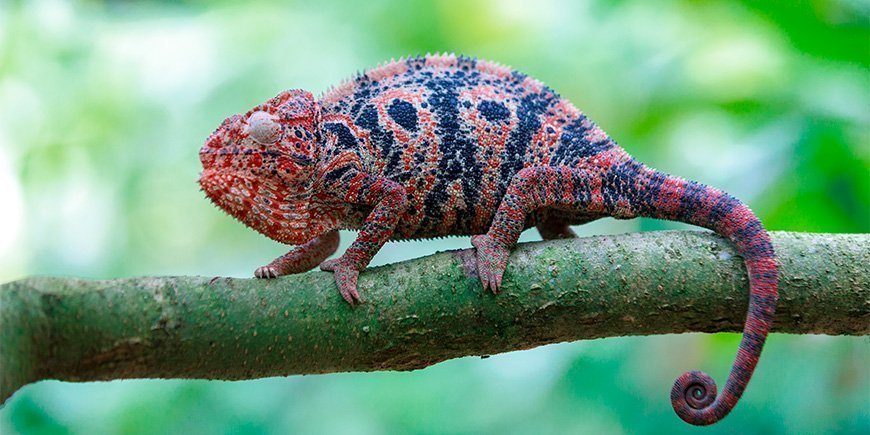
The warm, wet season – Madagascar’s summer – stretches from November to April.
Madagascar’s summer is characterised by warm temperatures, high humidity, and more rain.
Rain typically falls as brief, heavy showers late in the day or at night, so there are still plenty of dry hours to explore the island. Although the cyclone season prevents visits to the eastern and northern parts of the island between January and March, the rest of Madagascar is still worth visiting during these months.
In the summer months, the landscapes are greener and lusher. This period sees wild orchids start to bloom, which you can witness, for example, in Isalo National Park or Andasibe-Mantadia National Park. Wildlife becomes more active, and you might spot colourful chameleons emerging from their hiding spots during the summer months because they thrive in warmer and more humid weather. Furthermore, these months are also excellent for birdwatching as many birds arrive to breed in the rainy season. This also means they sing more loudly, making them easier to spot.
Advantages of travelling in the summer months:
- See the wild orchids blooming in the national parks.
- More active wildlife in the national parks, including reptiles, insects, and mammals.
- Rushing waterfalls, filled by the rains, such as those in Andasibe-Mantadia.
- Fewer travellers as it is the low season.
So when should you travel to Madagascar?
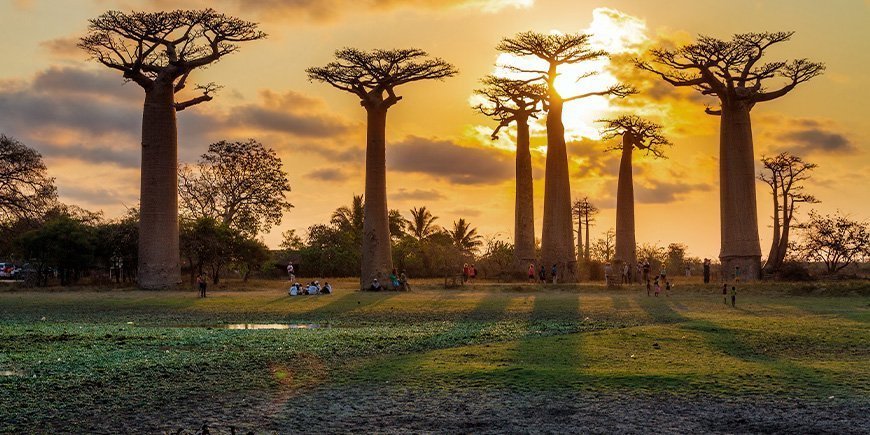
For many, the dry season from May to October are the best months to travel to Madagascar.
During this period, the weather is more pleasant and ideal for exploring the country’s beautiful national parks, diving into Madagascar’s historical and cultural sites, and experiencing the island’s fascinating wildlife.
Although the dry season is the most popular time to visit, the rainy season also has its benefits. Travelling between November and April allows you to experience Madagascar at its most lush and colourful, with extra active wildlife and stunning waterfalls.
Whenever you choose to travel to Madagascar, you’re guaranteed a unique tour filled with natural wonders, rare species, and unforgettable adventures. Unsure about the best time to go? Our travel specialists are on hand to help you find the perfect time to ensure you get the most out of your adventure in Madagascar.
TourCompass – From tourist to traveller
